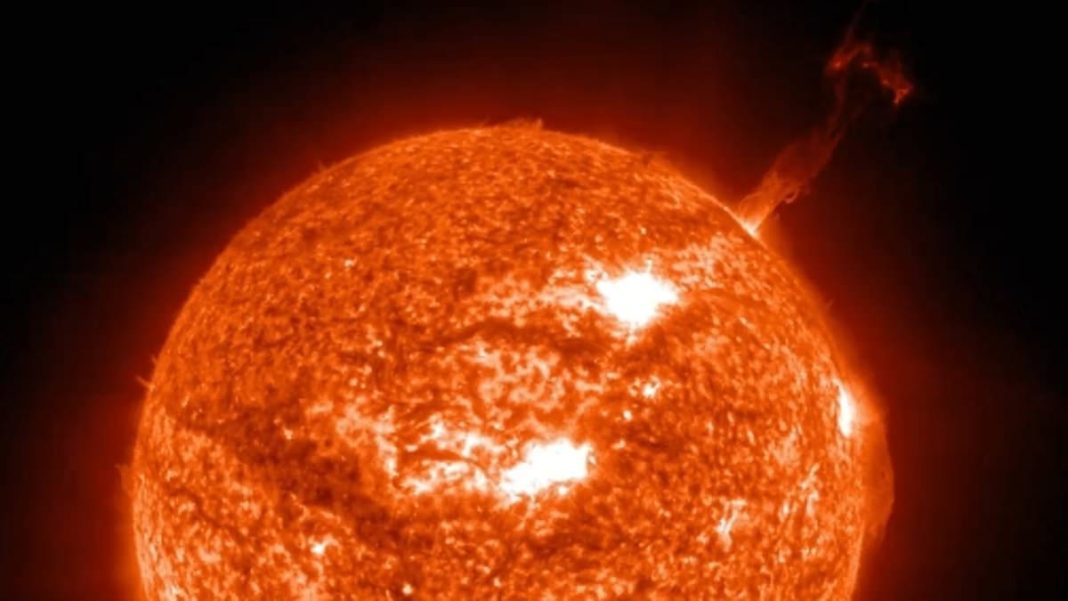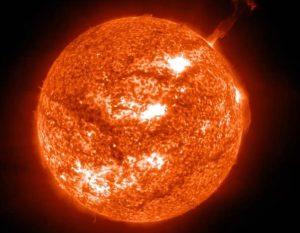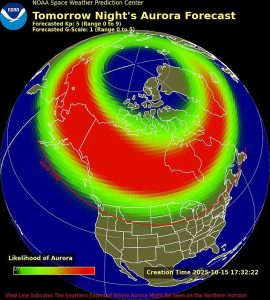Key Takeaways
- Four powerful solar storms are approaching Earth, potentially causing technology disruptions
- NOAA has issued a moderate G2 geomagnetic storm watch for Thursday
- The northern lights may be visible across multiple northern US states
- Power grid and communication systems could experience minor impacts
Earth is preparing for significant solar activity as four powerful bursts of solar energy race toward our planet. The National Oceanic and Atmospheric Administration (NOAA) has issued a moderate G2 geomagnetic storm watch, warning of potential disruptions to power grids, radio signals, and GPS navigation systems.
Timeline and Impact of Solar Storms
Space weather scientist Tamitha Skov stated: ‘Storms 2 to 4 arrive starting midday on October 15.’ She added: ‘We could be dealing with their effects until early October 17, assuming the sun doesn’t send any more Earth-directed storms.’
Skov explained that the first coronal mass ejection (CME) will likely bring only a ‘mild disturbance,’ but warned that the next three are ‘pancaked together,’ potentially amplifying their effects when they arrive in quick succession. A weaker G1 geomagnetic storm could linger into Friday with limited impact.
Solar Activity Source and Effects
The solar activity originates from a massive, tangled cluster of dark spots on the sun called Region AR4246. These sunspots are areas where the sun’s magnetic field is especially active and twisted, causing explosions of energy known as solar flares.
This region has already produced several M-class flares – mid-level eruptions powerful enough to disrupt radio signals and create bright auroras on Earth. One M2.7 flare that erupted on October 13 launched a CME now speeding toward our planet.
Northern Lights Visibility and Regional Impacts
The northern lights, or aurora, could be visible across the northern and upper Midwest, from New York to Idaho. States including Maine, Michigan, Wisconsin, Minnesota, North Dakota, and Montana may witness the spectacular display.
During stronger solar activity, the aurora might extend slightly farther south to areas like Iowa or northern Illinois.
Technology and Infrastructure Concerns
Power grid effects are expected to be minor, mostly occurring in high-latitude regions including Alaska and northern US states bordering Canada. Impacts would likely be limited to small voltage fluctuations rather than widespread outages.
Radio and GPS signals could experience temporary interference, particularly at high latitudes and on aircraft or polar flight routes. Effects would be less noticeable in southern regions.
Scientists note that since 2008, the sun’s solar wind has strengthened with increases in speed, density, temperature and magnetic field strength. This trend suggests more powerful solar storms may regularly hit Earth, causing increased disruptions.






